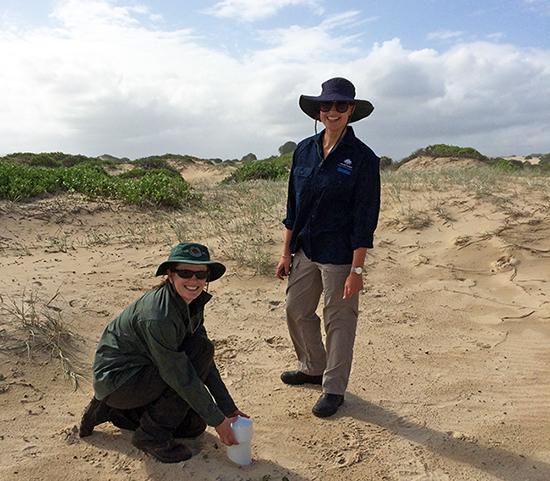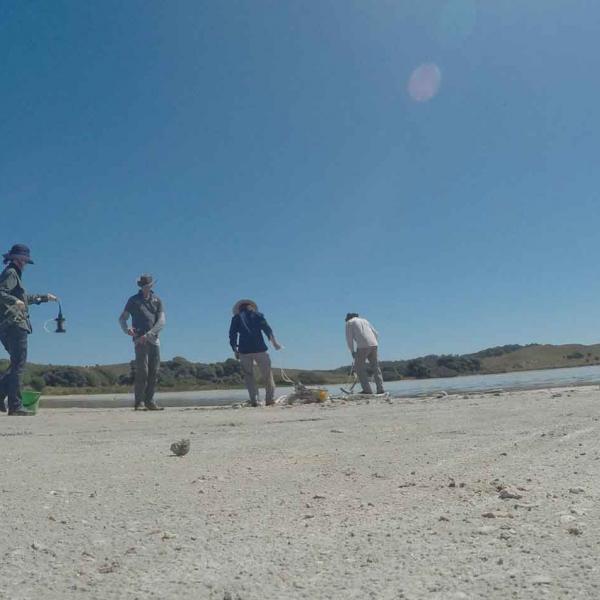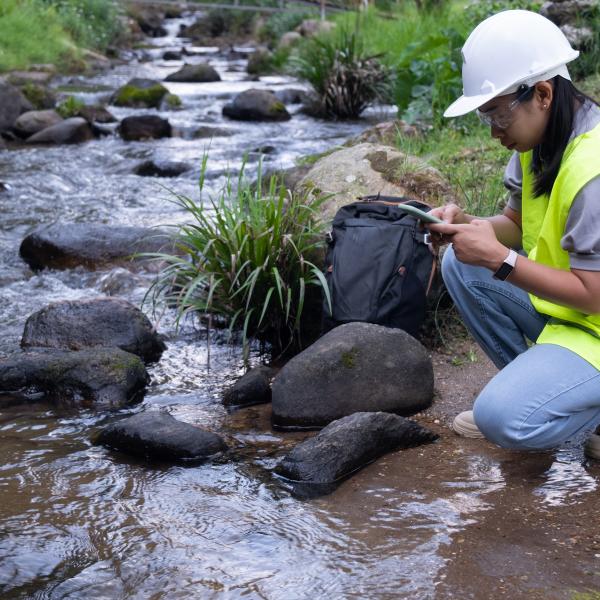

Published on the 25th March 2020 by ANSTO Staff
Key Points
-
Urbanisation and climate change are threatening the quality of drinking water from groundwater sources
-
Greater quantities of organic matter have been measured in samples from across the globe including Australia
-
ANSTO capabilities in using the water isotopes and dating the age of aquifers were important in the international collaboration
ANSTO groundwater scientists have contributed to research led by UNSW published in Nature Communications that shows urbanisation and climate change threaten the quality of drinking water and may result in an increase in groundwater contamination and household water costs in some areas.
A large group of international investigators, led by Dr Liza McDonough of the Connected Waters Initiative Research Centre at UNSW and supported by ANSTO, compiled the largest global data set of organic matter in groundwater to date involving thousands of groundwater samples from 32 countries, including Australia.
The work is part of an ARC Discovery Project on Groundwater dissolved Organic Carbon to identify and quantify the factors impacting dissolved inorganic carbon (DOC) in groundwater.
DOC is a naturally occurring component of groundwater, but the higher its concentration, the more difficult and expensive it is to make groundwater drinkable. In Australia, groundwater is widely used as the main source of drinking water for many cities and towns.
One of ANSTO’s groundwater experts Dr Karina Meredith, a team leader on the ARC Discovery Project, and Prof Andy Baker, an organic matter specialist at UNSW, are co-authors on the paper.
“It is very important to compile large global datasets, such as in this paper, so we can use this data to identify how changes in climate will change groundwater quality,” said Meredith.

Dr Karina Meredith and Dr Eliza Bryan in the field sampling groundwater at a coastal NSW site
The research confirmed that the quantity of dissolved organic carbon is driven by climate, land use, inorganic chemistry and the age of the aquifer.
The impacts of climate change and urbanisation, while likely to occur globally, differed by geography and climate.
Dr McDonough and collaborators concluded that the impact of climate change will affect groundwater dissolved organic carbon unevenly, due to temperature changes and differences in rainfall rates.
This knowledge can be used to predict major increases in dissolved organic carbon in groundwater following changes in temperature and precipitation.
The investigators identified a 19% increase in dissolved inorganic carbon that was associated with urban land cover.
They suggested that climate change and the conversion of natural and agricultural areas to urban areas will increase the quantity of organic matter in groundwater, decrease water quality and increase water treatment costs, compounding existing constraints on groundwater resources.
“Here at ANSTO we used radiocarbon to determine the age of the dissolved organic carbon in groundwater and stable isotopes to gain characteristic signatures for aquifers across Australia,” said Meredith.
“We looked at how the organic matter content changed from a river system to coastal or inland environments and how it responds when it reaches groundwater."
Researchers from the British Geological Survey, Southern Cross University, and the University of Bradford also contributed to the study.
Dr McDonough is joining Dr Meredith’s team in May 2020.



